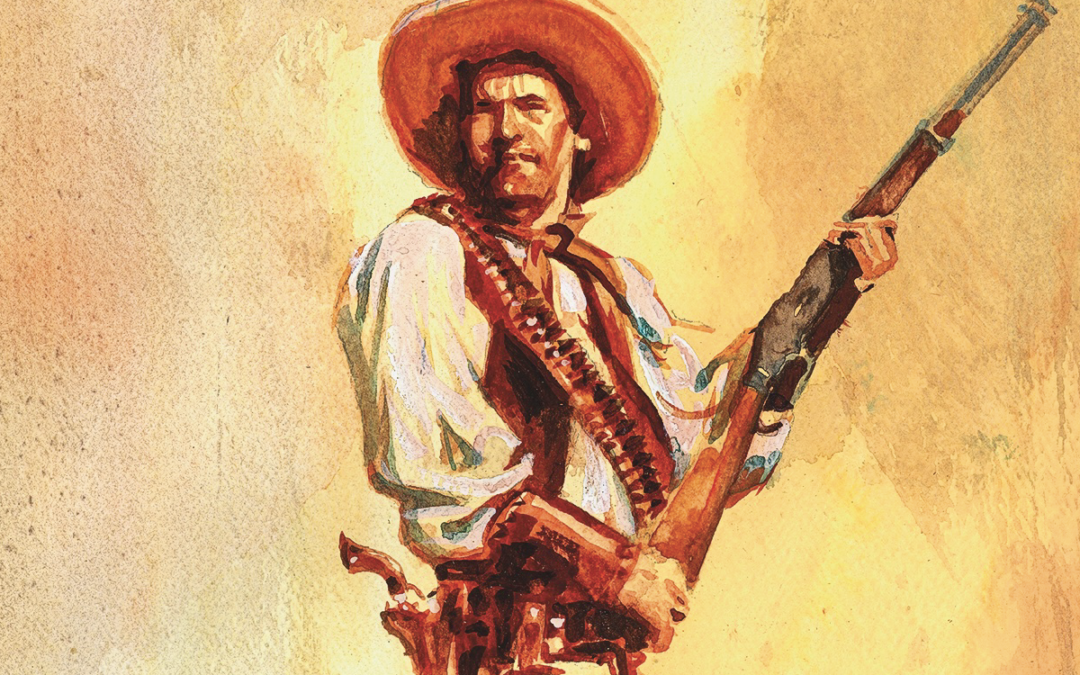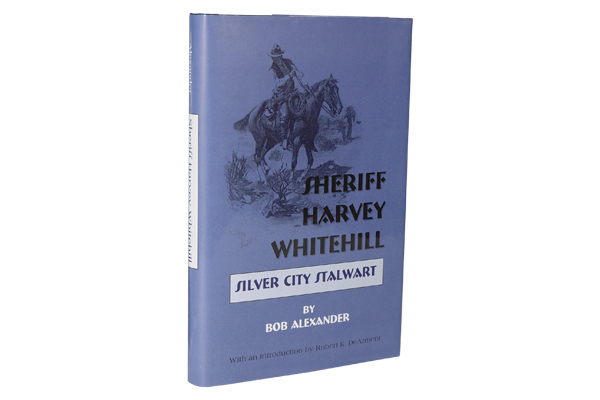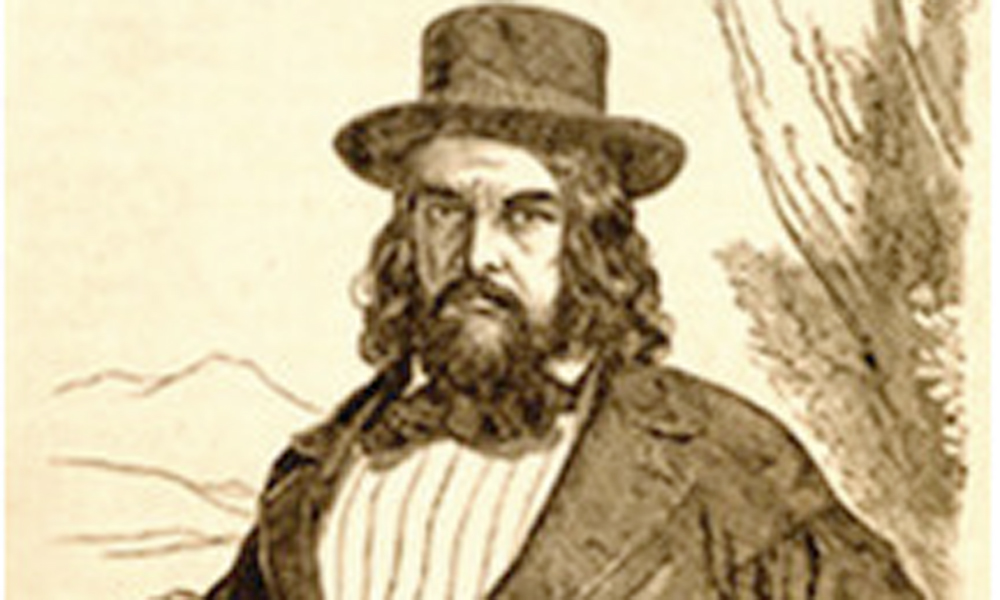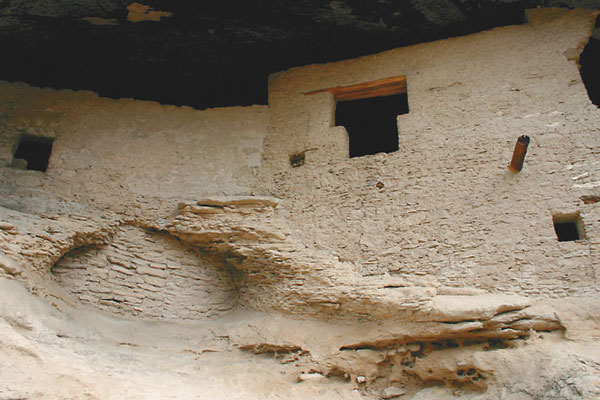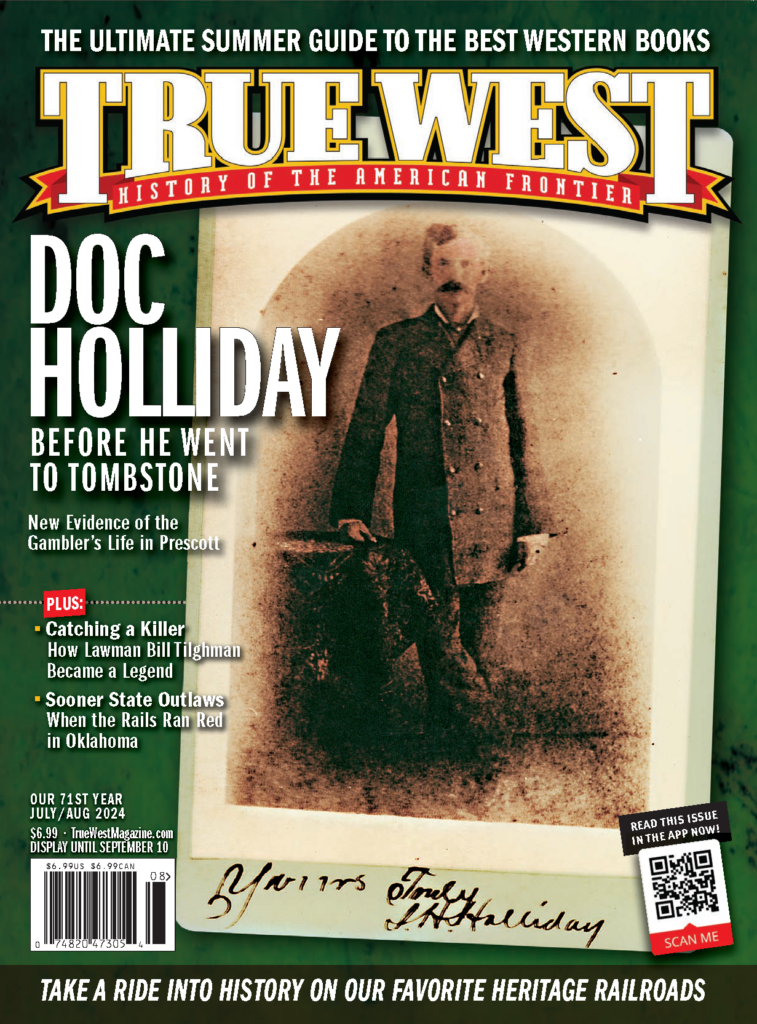The Gage Train Robbers vs. The Citizens of Silver City
“We better charge them.”
Maps & Graphics by Gus Walker | Based on the research of Bob Alexander and Karen Holliday Tanner

March 10, 1884
After an exercise break, prisoners Frank Taggart, Mitch Lee and Kit Joy overpower two guards at the jail in Silver City, New Mexico, and procure four six-shooters, a Winchester, a double-barreled shotgun, a Bowie knife, gunbelts and about 150 rounds of ammunition.
Three other prisoners take advantage of the break: George Washington Cleveland (a fellow Gage train robber who snitched on the others), Carlos Chaves (convicted murderer) and Charles Spencer (awaiting trial on horse theft).
All six men race into the street and head for the Elephant Corral. Joy tells the owner, “We are the Gage train robbers and we want horses.” George Chapman dryly replies, “You will be killed if you try to escape.” Joy tells him, “If we stay in jail we will be hung [sic] anyway, and I would rather be shot than hung.”
While the escapees mount up, armed locals have gathered outside. When the six explode out onto the street, Jack Fleming pulls up his scattergun and peppers Cleveland’s horse, which goes into a plunging fit, bucking him off. Joy picks up the snitch, and six men on five horses run the gauntlet of fire, heading northeast on Fort Bayard Road.
Having slipped the harness from his delivery wagon horse, John C. Jackson, 46, shadows the outlaws. A half mile up the road, the outlaws stop, fire at him, then ride on.
Jackson keeps riding, passing people outside their cabins and encouraging them to join him in the chase. He convinces Frank Andrews, who quickly saddles a horse and spurs off towards the shooting.
Rancher Dan Coomer, who was in the bakery when the escape started, now has his six-shooter and rifle he retrieved from home. Borrowing a horse, he rides off with 45-year-old bricklayer Thomas E. Park. They are 10 minutes behind the escapees. Coomer later says, “We laid the whip to our horses.”
Up ahead, Andrews has run his horse into a wire fence, delaying him several minutes. Coomer and Park catch up to him. Eventually all three join Jackson in following the outlaws. When the outlaws stop, Coomer tells the others, “We better charge them before they get into the hills.”
Spurring his mount forward, Coomer gets within 100 yards of the gang and fires his rifle at them. Once the outlaws realize he is alone, they charge him. Dismounting, Coomer goes to one knee and shoots, knocking Chaves off his horse and felling one of the horses. The outlaws pick up Chaves and retreat as Coomer fires.
Jackson brings Coomer’s horse to him, and the two ride northeast of the escapees to cut them off. Dismounting, Coomer and crew keep the outlaws pinned down with rifle fire.
During a lull, the outlaws steal up a brushy canyon in the Pinos Altos foothills. Local kids, who have heard the shooting, descend on the area. One young boy meets Coomer and Jackson, telling them he saw five men go up the arroyo. Coomer and Jackson follow, about 400 yards behind. Meanwhile, half the town has shown up—including the freed jail guards and a doctor in a buckboard.
Two hours have passed since the jailbreak, and the reinforced posse spreads out, combing through the brushy hills. Coomer and the jail guards spot the outlaws and open fire as they charge forward. Cleveland is killed in the exchange and Coomer fires twice, hitting Lee “from side to side, just above the hips.”
With two down, the gang surrenders. The posse moves in and disarms everyone. They find the bodies of Cleveland and Chaves, yet Joy is nowhere to be seen.
The men soon hear four or five gunshots farther up the canyon. Word comes down that posseman Joseph Lafferr has been shotgunned by Joy as the outlaw made his way westward through the mountains.
The bloody fight is over, but one of the outlaws is still at large.

The Gage Train Robbery
“My God, there’s a hole in the tracks!” yells the Southern Pacific fireman, Thomas North.
Engineer Theopolis C. Webster applies the brakes, but it’s too late. It’s about 4:20 p.m. on November 24, 1883, as the eastbound locomotive jumps the tracks and jackknifes to a jarring halt. A rifle shot from the desert floor slams Webster to the earth. (It’s unclear if he was inside the cab or if he had left the train to inspect the damage when the outlaws shot him.)
As more shots rake the engine, fireman North runs to the opposite side of the train and hides in a ditch.
Four outlaws approach the mail car, mistaking it for the express car, and fire promiscuously, demanding to be let inside. An onboard postal agent almost gets hit as a bullet bores through the walls of the rail car and leaves “a hole in the sleeve of his coat.”
The cowboys move on to the express car and begin firing until the conductor and a passenger detrain and approach the outlaws. The outlaws “encourage” them to hand over some $355 and a gold watch.
By then, the express messenger has finally opened the door, and the leader of the robbers jumps up into the car. As he does, his bandanna slips, revealing his two chipped front teeth. Bypassing passengers’ Mexican coin and jewelry as probable “Christmas presents,” the leader ferrets out $518 in coin and $312 in currency. Not satisfied with the paltry take, the outlaws return to the mail car and rifle through it, looking for more loot. As they do, the lead robber, having discovered some nuts in a drawer, lets his mask drop and picks out the choicest ones with his Bowie knife. He chews them with relish. Finding no more money (they missed a registered mail pouch under a table), the four outlaws herd their prisoners back to the passenger cars and warn them not to step out for 10 minutes, under penalty of death.
The four horsemen, leading two mules, ride off in a northerly direction. Although none looked familiar, passengers did notice that one of the robbers is black.

Still at Large
Two of the outlaws visited Albert Eaton’s hay camp the day before the robbery, asking about the trains. Their mounts—a mule and a horse Eaton recognized as once belonging to acting Silver City Marshal Harvey Whitehill—aroused Eaton’s suspicion. Eaton later spotted the mule in Silver City and learned it had been traded on the Gila two days after the train robbery. He also learned that, prior to the robbery, Whitehill’s horse had been sold to a former employee, Christopher Carson “Kit” Joy. Since Eaton reported one of the men as having chipped upper teeth, Joy was one of the outlaws who visited him that day.

Wells Fargo and the Southern Pacific each pledged $1,000 per man for each train robber arrested and convicted. Plus the U.S. Post Office kicked in $800 ($200 per man), so the total reward was a healthy $8,800—enough for many Grant County men to actively take notice. And notice, they did.

One Crazy Roundup
Tipped off by the sale of one of the pack mules used in the robbery, acting Silver City Marshal Harvey Whitehill traveled, by train, to Socorro, New Mexico, and arrested George Washington Cleveland, a “colored-man.” By telling Cleveland the others had ratted on him, Whitehill tricked Cleveland into naming his fellow Gage robbers: Kit Joy, Mitch Lee and Frank Taggart.
Numerous posses headed out to round up the robbers. Two of the suspects, Joy and Lee, had been sighted in the Duck Creek-Alma area. When the lawmen arrived, though, the locals refused to cooperate.
Taggart had fled from Grant County and landed in the Mormon town of St. Johns, Arizona. (Taggart, from Utah, had been raised by a man named McIntosh, who lived near St. Johns.) Marshal Whitehill, his son Harry and gunman John Gilmo rode the train to Holbrook (see circuitous route, opposite page), where the trio secured a team and wagon for the remaining 60-mile leg of their journey.
Discovering Taggart had left the area with a herd of cattle, Gilmo and “a Mexican” rented horses and hit the trail. After a long, rough ride, Gilmo arrested Taggart at the Jewett Ranch and returned with his prisoner to St. Johns. Taggart’s friends and relatives tried to have Gilmo and Whitehill arrested for “kidnapping,” charging that the order for arrest originated in New Mexico so the charges shouldn’t stick in Arizona. The lawmen prevailed and the trio, with their prisoner, backtracked by rail to Silver City.
Meanwhile, two New Mexican cowboys, Jack Best and Charles Perry, also intrigued by the big reward, tracked Lee and Joy to Bill Slaughter’s ranch in the American Valley of New Mexico. Upon their arrival, though, seven men exited the Slaughter ranch house with guns and questioned them. Joy, having just stayed at Perry’s ranch, saved them by saying, “I know them boys.” The two stayed all night, their plans foiled by bad weather. “It was snowing, and we did not care about going out,” Perry said.

The next morning, the cowboy bounty hunters convinced Joy and Lee to ride to Socorro. (Popular folklore stated it was to free an-
other badman, Joel Fowler, out of jail.) On the way, they disarmed Lee and Joy and delivered them to Sheriff Pete “Pedro” Simpson in Socorro on January 20. Sheriff Simpson accompanied the quartet on the train to Silver City, to deliver the suspects to James B. Woods, sheriff of Grant County.
Ironically, while Simpson was away, a mob broke into the jail and lynched Fowler. And while Whitehill chased his reward, the Silver City town council fired him for “neglecting his duty” by being “so wrapped up in the capture of the train robbers.”

Divvying Up the $8,800 Reward—A Nine-Way Split
With a rash of lynchings all over the Southwest and particularly along the Gila, the Gage jailbirds got antsy. At the time of the jailbreak, virtually all of the lawmen who brought them in were away from town. Gilmo was in San Francisco trying to get his reward money; Perry and Best were back on their home range waiting to get paid; Sheriff Woods was in Arkansas delivering his sons to school; Whitehill was in Santa Fe; Sheriff Pete Simpson was back in Socorro, defending himself over a killing of a rowdy cowboy.

Because of the jailbreak, Wells Fargo and the Southern Pacific Railroad had a thorny problem in determining who to pay. After some wrangling, the rewards were distributed as follows (the total reward was not paid out):
$ $ $ Harvey H. Whitehill $1,333
$ $ $ Charles C. Perry and A.J. Best (jointly) $1,333
$ $ John W. Gilmo $888
$ Pete A. Simpson $444
$ Thomas E. Park $500
$ Frank Andrews $500
$ John C. Jackson $500
$ Daniel Coomer $500

True West Archives
Aftermath: Odds & Ends
After their surrender, Mitch Lee and Frank Taggart were almost immediately strung up after Lee finally confessed to the shooting of the train engineer: “Well, by God! I did kill him.” The life of escaped prisoner Charles Spencer was spared when he convinced the lynch mob he did not shoot during the gunfight (plus he had been in jail on charges of horse theft).
Kit Joy escaped from the Grant County Jail, but did not leave the area. Ten days after the jailbreak, a posse set a trap for him at Rackety Smith’s cabin, high in the Mogollons northeast of Alma, New Mexico, but the wily outlaw didn’t show.
Not long after, Smith and several neighbors went hunting Joy and found his concealed camp. Smith yelled out for Joy to surrender, but the outlaw replied, “I’ll die first.” Armed with a .45×60 Winchester rifle, Smith fired two shots, the second shattering two bones in Joy’s left leg below the knee.
The outlaw was brought back to Silver City on March 22 and put back in the Grant County Jail. On November 17, 1884, he was tried and sentenced to life at the Santa Fe Penitentiary.
After pleading model behavior, Joy was pardoned in 1896, living out his life with his mother near Fort Huachuca, Arizona, where he worked as a tailor (and a short stint as a moonshiner, for which he served jail time). He died, at age 76, in Douglas on April 14, 1936, and his body is buried in the Bisbee-Lowell cemetery. The man who brought him down, Smith, committed suicide, according to popular folklore.
Recommended: Lynch Ropes & Long Shots: The Story of an Old West Train Robbery by Bob Alexander, published by High-Lonesome Books.

